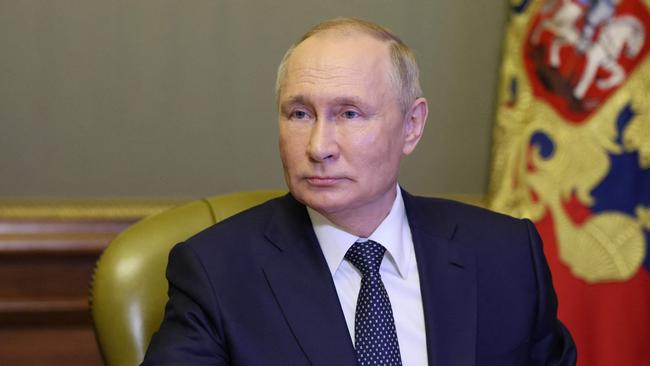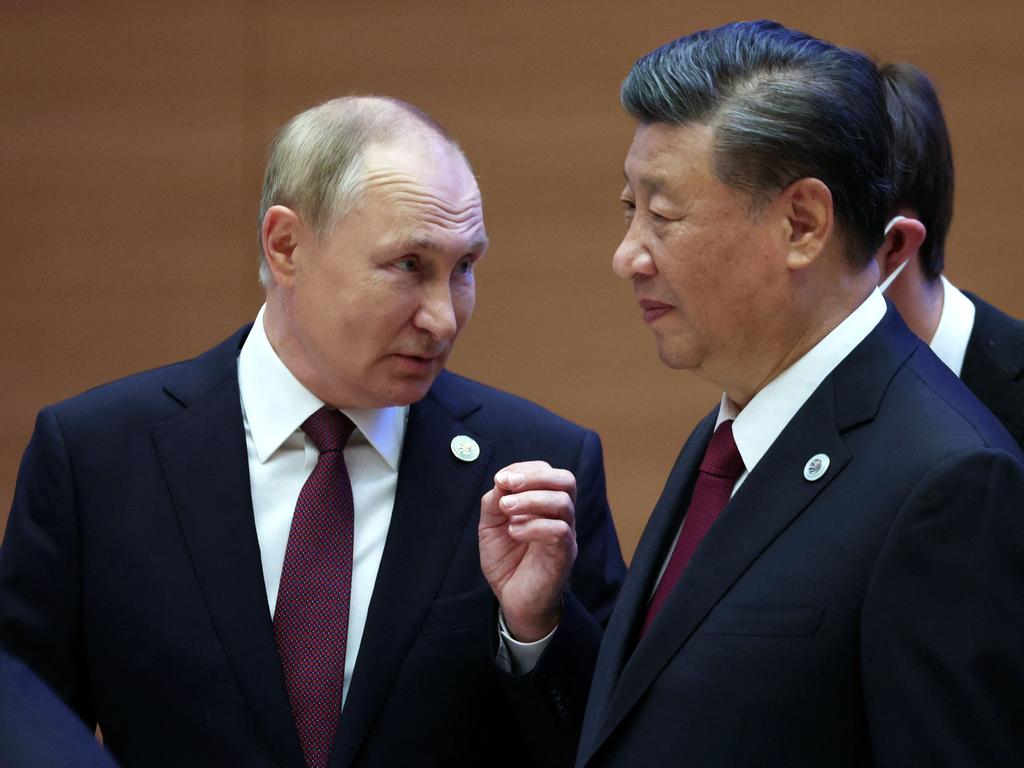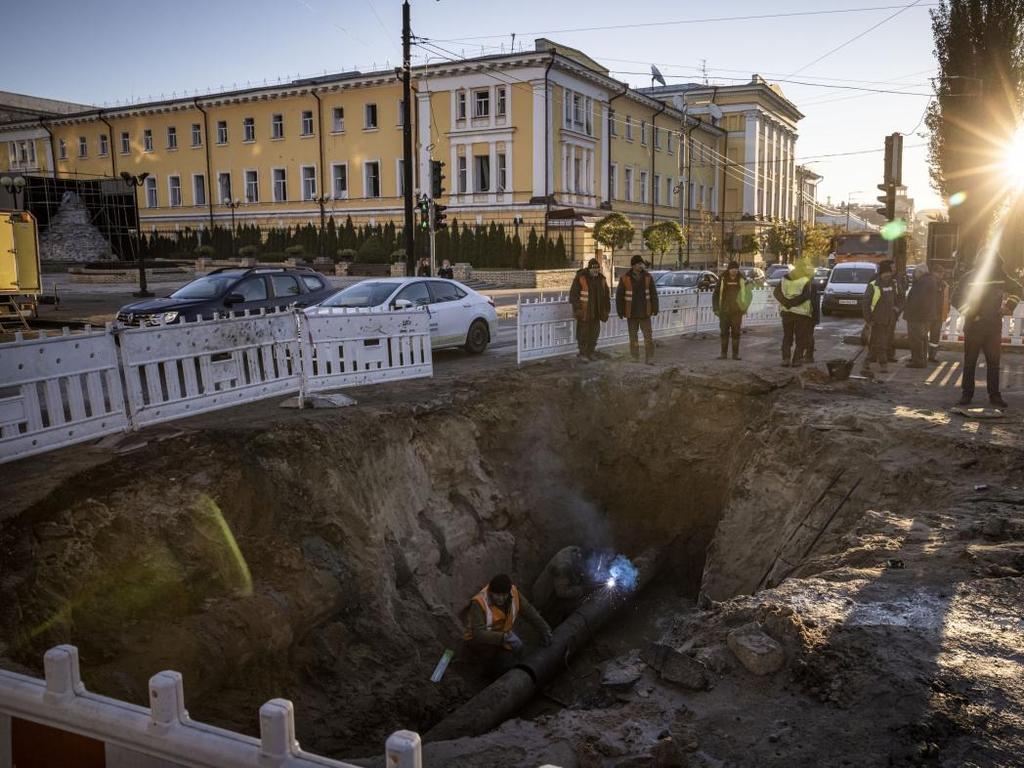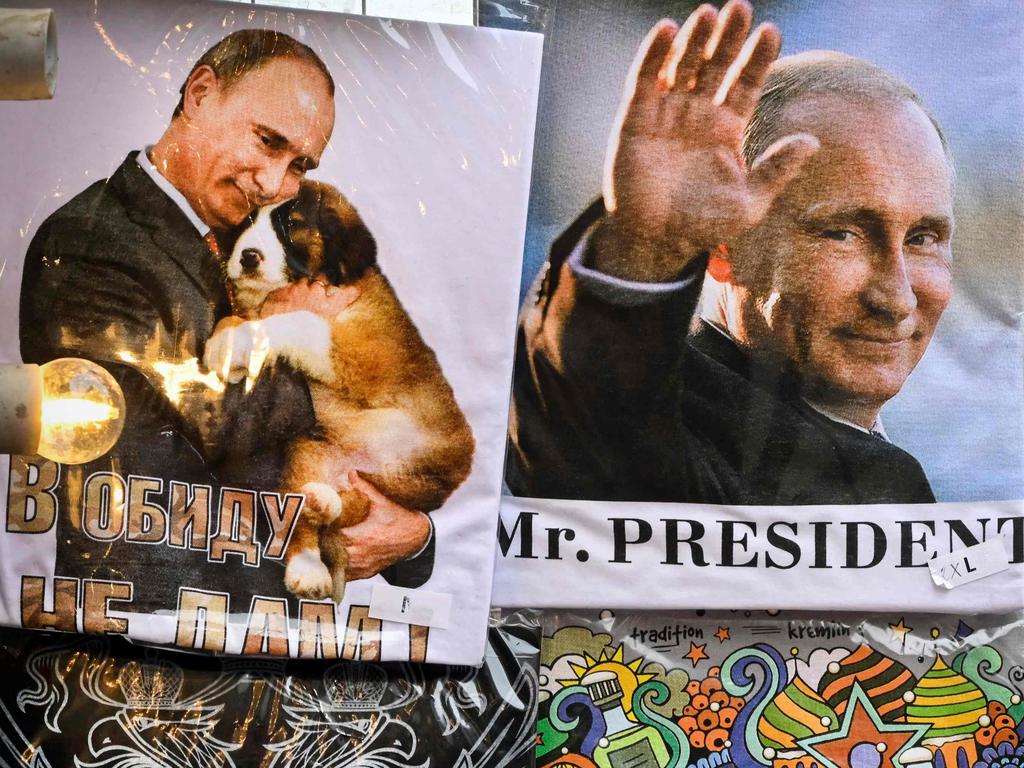
Putin must pause to reinforce and reconstitute his forces. Russia desperately needs smarter generals, although the brutal system Putin leads cannot produce them. Ukraine’s President Volodymyr Zelensky understands that now is the time to press home his advantage.
Far from hunkering down for winter, Ukraine will probably push harder in the Donbas and towards Crimea, hoping Russia’s brittle military will break.
As many Russian males have fled overseas to avoid fighting as have been caught by the conscription press gangs. The bulk of the Russian people are not as committed to the war as Putin. That is why prisoners, Chechens and mercenaries, not the children of Putin’s ethnic Russian power base, are sent to the front.
By turning to partial mobilisation, Putin has ensured the war will touch a much larger number of Russians. If his military is incapable of reversing its battlefield losses, Putin faces a double risk of stoking opposition domestically and in the armed forces. The echoes of Russia’s 1918 revolutions resonate.
Putin is not yet facing his Muammar Gaddafi or Saddam Hussein moment of regime collapse and his own death. But he is closer to that point than at any time in his leadership.
This is the context in which worries about Russia’s use of chemical, biological and, most concerningly, nuclear weapons are growing. Putin’s speech announcing conscription set out an unhinged collection of conspiracy theories about Western plots against Russia, but his claim that he wasn’t bluffing about using nuclear weapons must be carefully weighed up.
The Federation of American Scientists estimates that Russia has 1912 tactical nuclear weapons, deliverable from aircraft, ships and land-based mobile missile launchers.
The “lowest yield” of these weapons delivers an explosion of about 0.3 kilotons of TNT – about the size of the 2020 Beirut port explosion. (By comparison, the bomb detonated over Hiroshima had an explosive yield of 15 kilotons.)
Detonated over a city, a Russian tactical nuclear weapon will devastate several square kilometres and have blast effects covering a much wider area. Radioactive fallout would last for several days and be carried by prevailing winds over a wide area, potentially across borders.
The devastation wrought by a single weapon would be appalling, but then so is the destruction caused by Russian conventional artillery barrages and missile attacks.
While using a nuclear weapon would shock the world, it would not materially change the course of the war. Ukraine still would have the current tactical advantage. It is possible that the Russian use of a nuclear weapon would prompt the Ukrainian leadership instantly to sue for peace on Moscow’s terms, but more likely Ukrainians would be further hardened to resist Russian aggression.
Kyiv might then choose to ignore American and European advice to limit the war to its own territory. It could escalate the fight on to Russian soil.
We have seen that Ukrainian forces increasingly are able to strike deep into Russian-occupied areas. There is no reason to think they couldn’t hit targets deep inside Russia.
Does Putin have other nuclear options? He could perhaps use multiple weapons, but the risk is that a targeting error or wind direction will take the destructive effects of the weapons into neighbouring NATO countries. An online National Atlas of Ukraine reports that, in winter, the wind direction in the north of the country is towards democratic Europe. In the south of Ukraine, the prevailing winter winds tend to the north and east.
In effect, if Putin uses nuclear weapons he will contaminate his NATO opponents, which might well trigger a NATO response, or he could contaminate parts of Belarus and Russia, hardly a move to shore up his own regime stability.
There is another possibility, which is that Putin detonates a nuclear weapon over a remote location, such as Ukraine’s Snake Island in the Black Sea, to demonstrate Russia’s deadly intent. That would directly threaten NATO members Romania and Bulgaria, not to mention Russian-occupied Crimea and the Russian Black Sea Fleet currently at sea to avoid Ukrainian attack.
In short, the use of nuclear weapons adds huge risk to Putin’s situation without clearly giving him a battlefield advantage. He risks a NATO response, which inevitably will end with his regime defeated, and he risks contaminating his own military forces and populations, which would probably see the country turn against him.
This is not to say that Putin won’t consider using nuclear weapons. He is desperate and cornered, but nuclear use will most likely accelerate his demise.
The greatest value of nuclear weapons for Putin is the coercive value that comes from threatening their use but not actually using them. Putin has been greatly helped last week by US President Joe Biden delivering a rambling, largely incoherent speech at a Democratic Party fundraising event in New York.
Biden wrongly said “we have not faced the prospect of Armageddon since Kennedy and the Cuban missile crisis” – in fact, the risk of nuclear conflict has kept the world stable through the threat of mutually assured destruction for decades. MAD is not a pretty strategy but it has worked to keep the US and Russia in a controlled relationship and will continue to do so.
Biden then called into question his backing for Kyiv by saying “we have a direct threat of the use of the nuclear weapon if, in fact, things continue down the path they’ve been going. That’s – that’s a different deal. That’s a different deal.”
And Russia has troubles, Biden told his audience, “you got eight time zones and the tundra is melting and methane is leaking”. Of Putin, Biden asked: “Where does he find a way out? Where does he find himself in a position that he does not, not only lose face, but lose significant power within Russia?”
It would be laughable were it not so tragic that Biden is incapable of presenting a clear American response to Russian coercion, other than to blurt his inner meanderings.
Just as we saw with the disastrous sudden American withdrawal of forces from Afghanistan, Biden’s national security policy too often emerges as the President indulging his instincts rather than thinking through policy options.
Putin’s way out of Ukraine is, quite simply, to get out of Ukraine. Withdraw from all of it. There can be no “different deal” as Biden mused.
The US, Europe and decent democracies such as Australia and Japan must be prepared to face down Putin’s coercion. If we can’t do that, the autocracies will win everywhere, and democracy will face its own desperate and cornered moment.








Ukraine’s battlefield successes and Russia’s botched mobilisation efforts are turning the war’s direction against Vladimir Putin. Momentum and confidence count for a great deal in war, and right now this is all breaking Kyiv’s way.